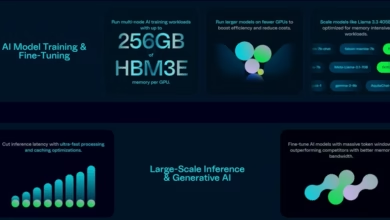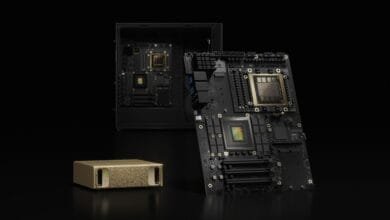PCIe 7.0: Coming Later Than You Think (And Not for Everyone)

▼ Summary
– The PCIe 7.0 specification has been released, offering a theoretical max bandwidth of 512GB/s in both directions over a x16 connection.
– PCI-SIG highlights PCIe 7.0’s role in meeting AI-driven bandwidth demands for data centers, HPC, automotive, and military/aerospace applications.
– Consumer devices are not a current focus for PCIe 7.0, with adoption expected to take time even in targeted markets like cloud computing.
– PCIe 7.0 is backward compatible with previous versions but has no immediate plans for consumer hardware like SSDs or GPUs.
– PCI-SIG has already begun pathfinding for PCIe 8.0, with PCIe 6.0 still not widely available in consumer products.
The PCIe 7.0 specification has officially arrived, marking another leap in data transfer technology, though most consumers won’t see its benefits for years. While the PCI Special Interest Group (PCI-SIG) confirmed the release, delivering unprecedented bandwidth speeds of 512GB per second in bidirectional x16 connections, this advancement primarily targets specialized industries rather than everyday computing.
According to PCI-SIG President Al Yanes, the new standard upholds the group’s tradition of doubling bandwidth every three years. AI-driven sectors like hyperscale data centers, high-performance computing, and aerospace stand to gain the most, as these fields demand the extreme throughput PCIe 7.0 offers. Notably absent from the announcement? Any mention of consumer-grade hardware.
The reality is that mainstream adoption lags far behind specification releases. PCIe 5.0, introduced in 2019, only began appearing in consumer GPUs and SSDs around 2022, and even now, it’s far from universal. PCIe 7.0’s backward compatibility ensures future-proofing, but don’t expect it to reach desktops or laptops anytime soon.
Interestingly, while the industry digests PCIe 7.0, PCI-SIG is already laying groundwork for PCIe 8.0, with a tentative 2028 completion date. By then, PCIe 6.0 might finally be making its way to consumer devices, highlighting the significant gap between specification announcements and real-world availability.
For now, PCIe 7.0 remains a powerhouse reserved for data-intensive applications, leaving everyday users to wait as the technology slowly trickles down. The takeaway? Cutting-edge specs often debut years before they become relevant to the average PC builder or gamer.
(Source: The Verge)


